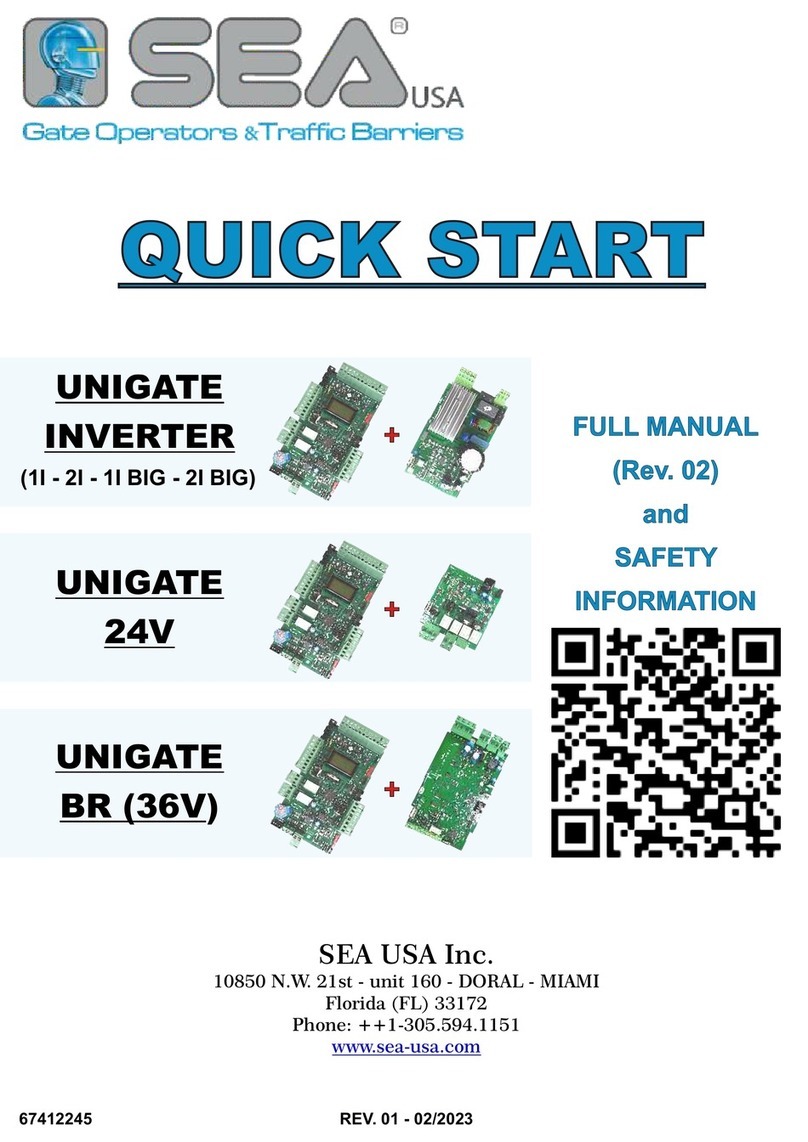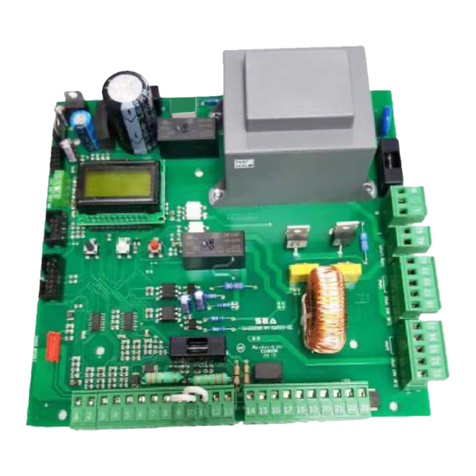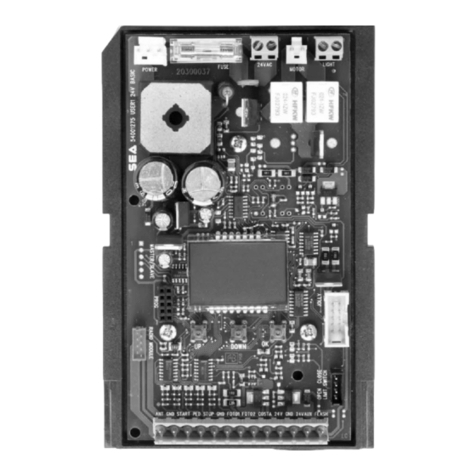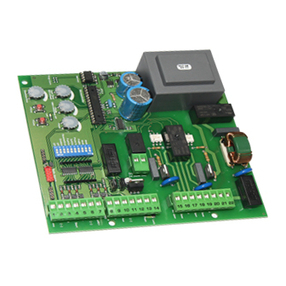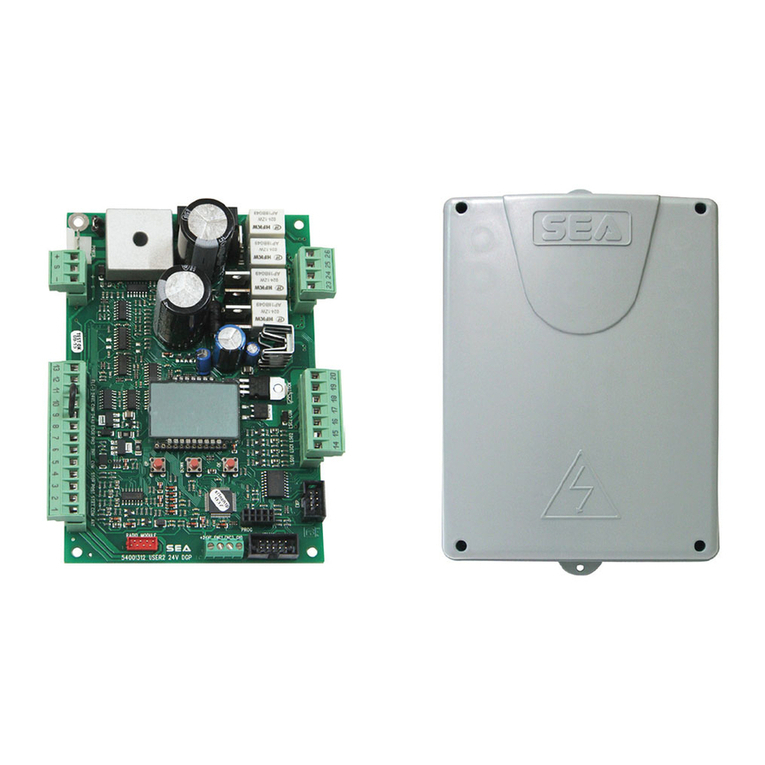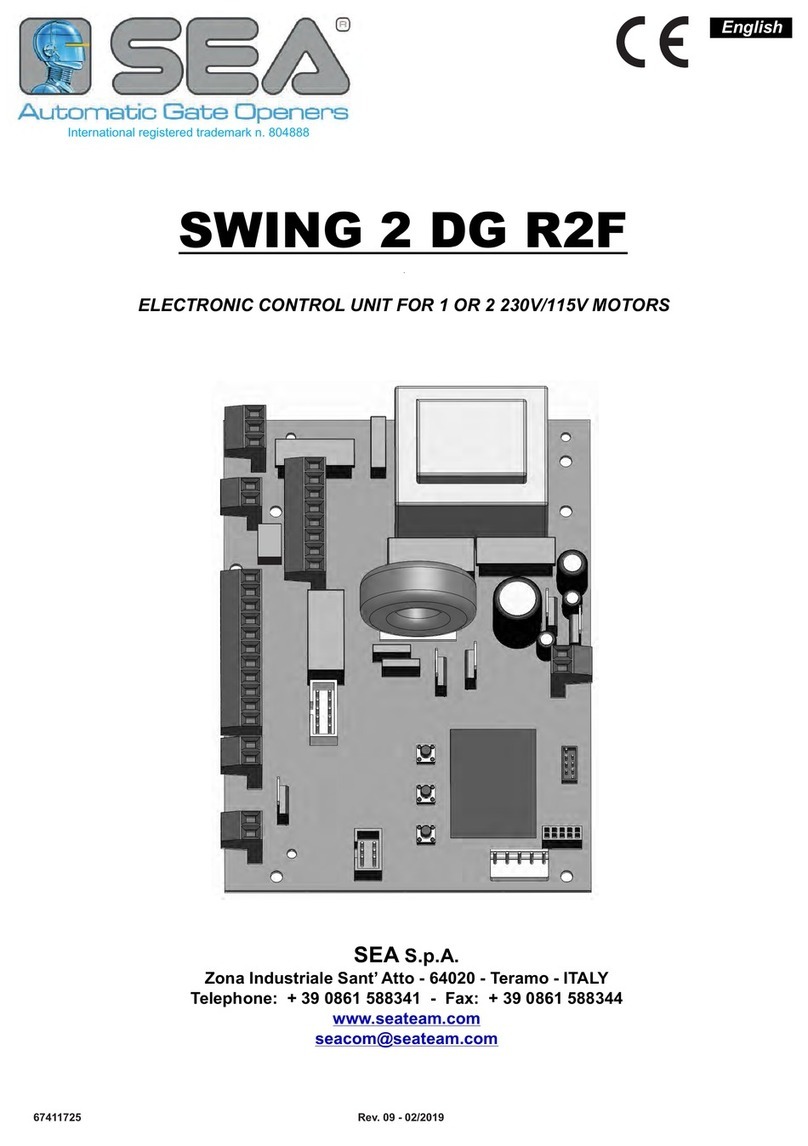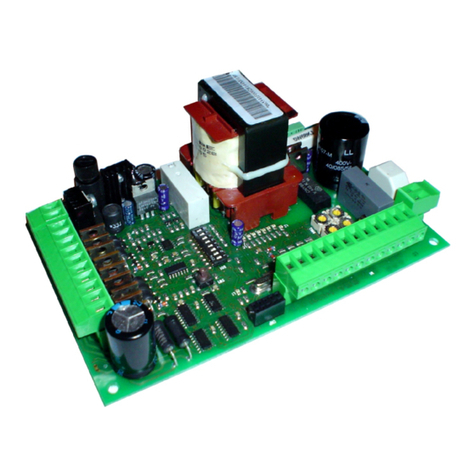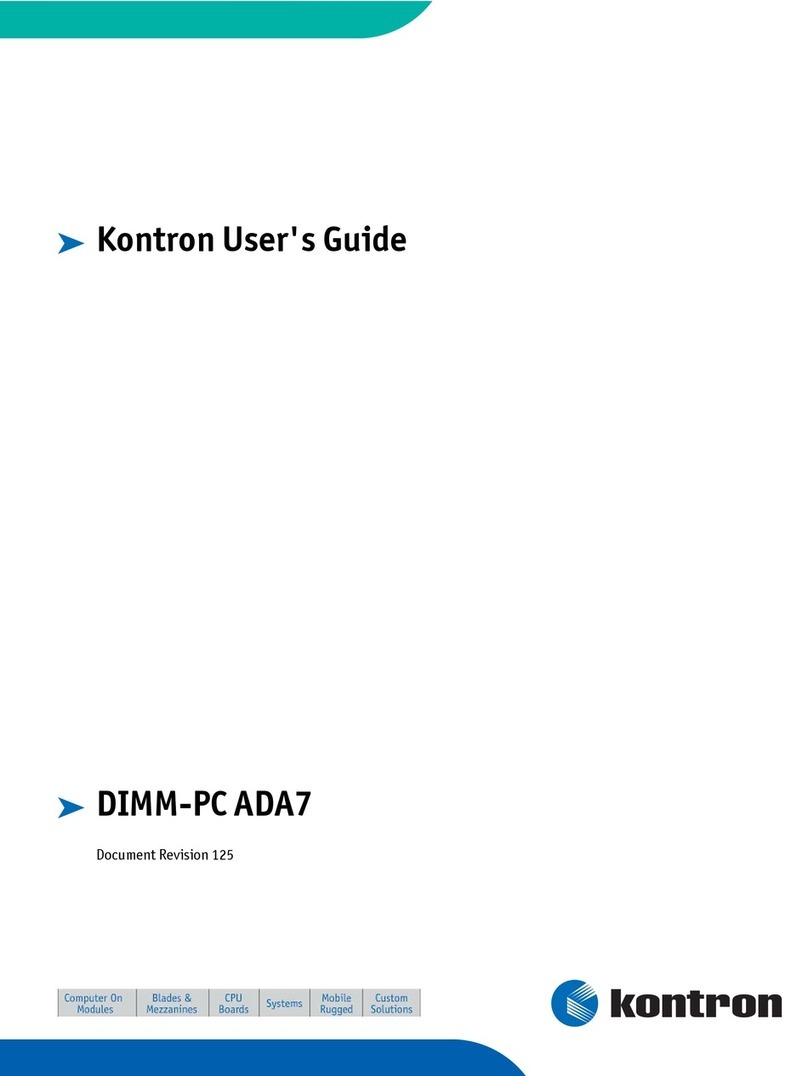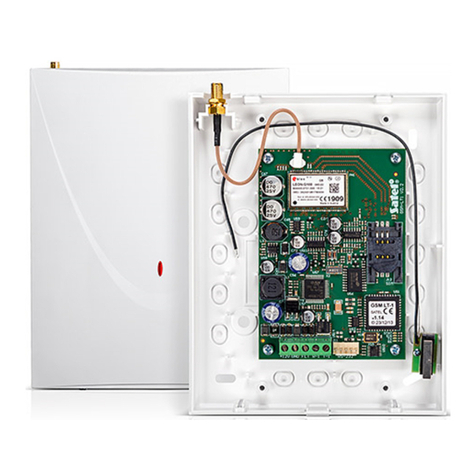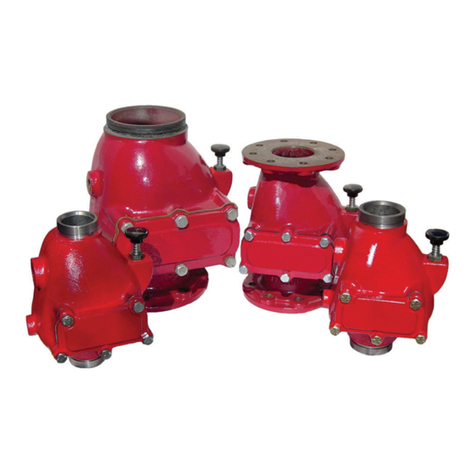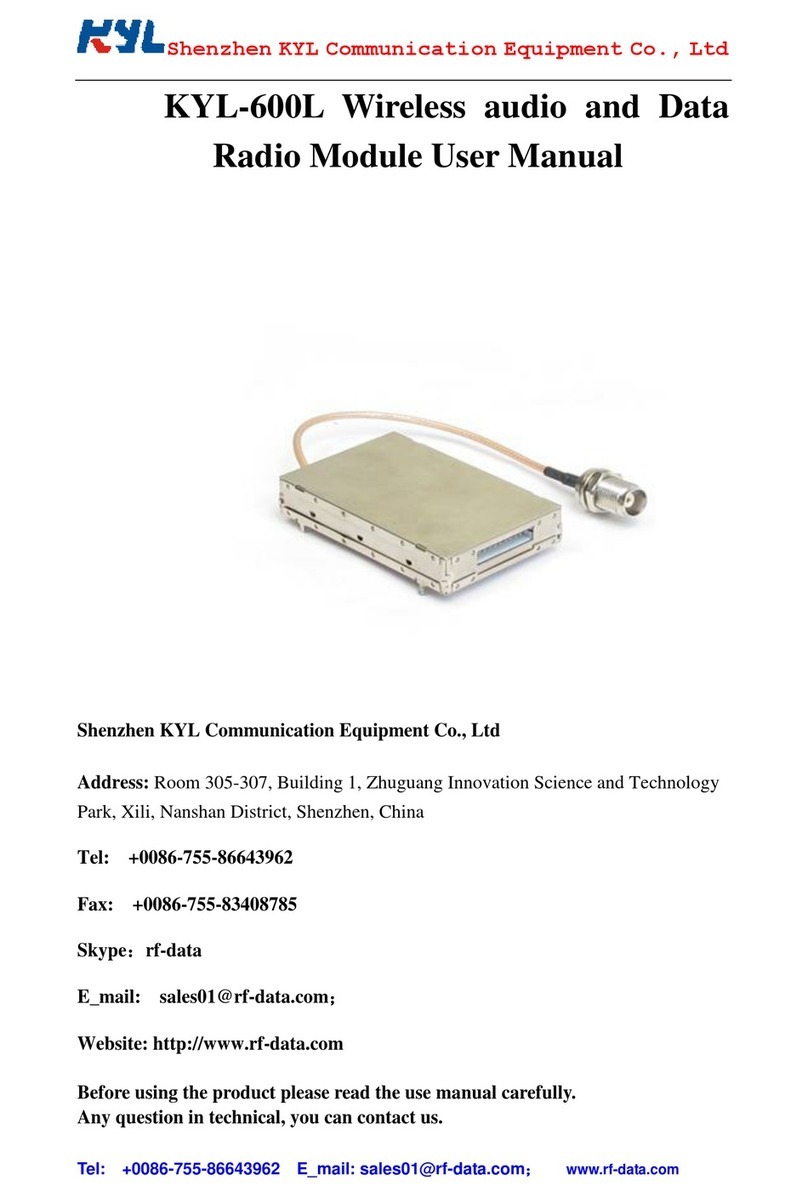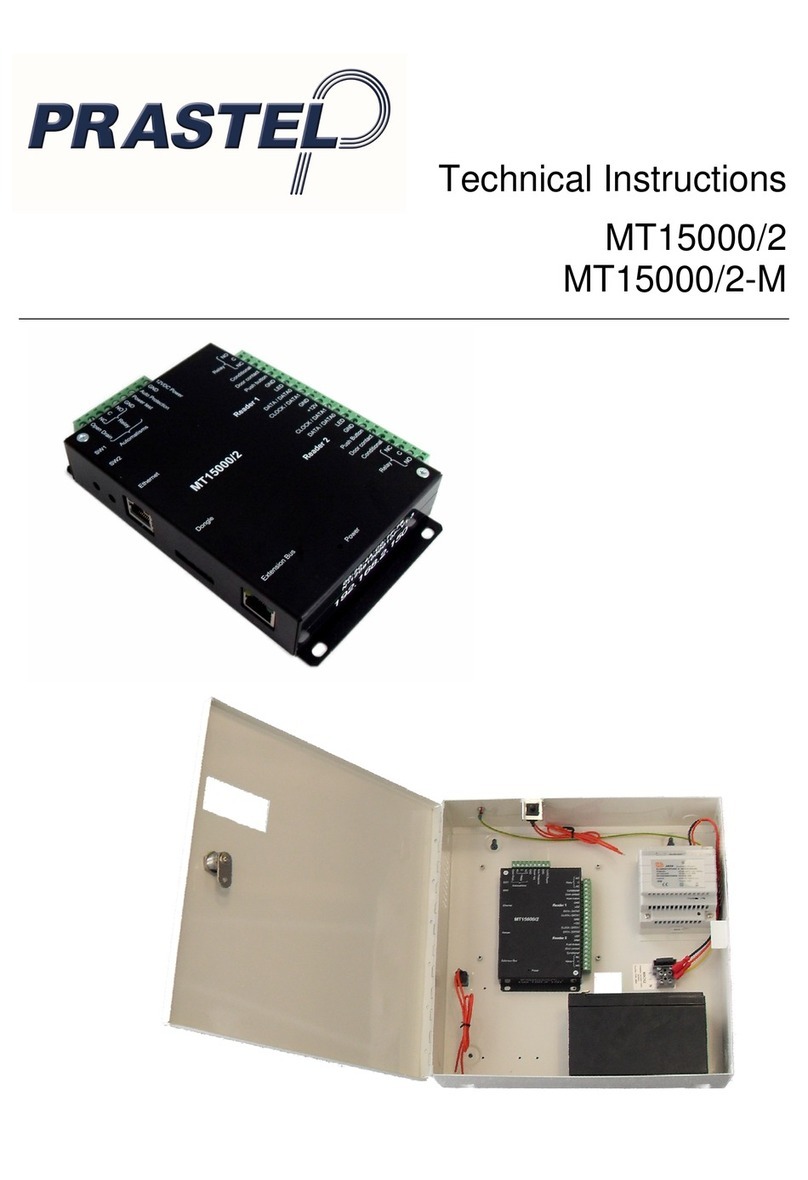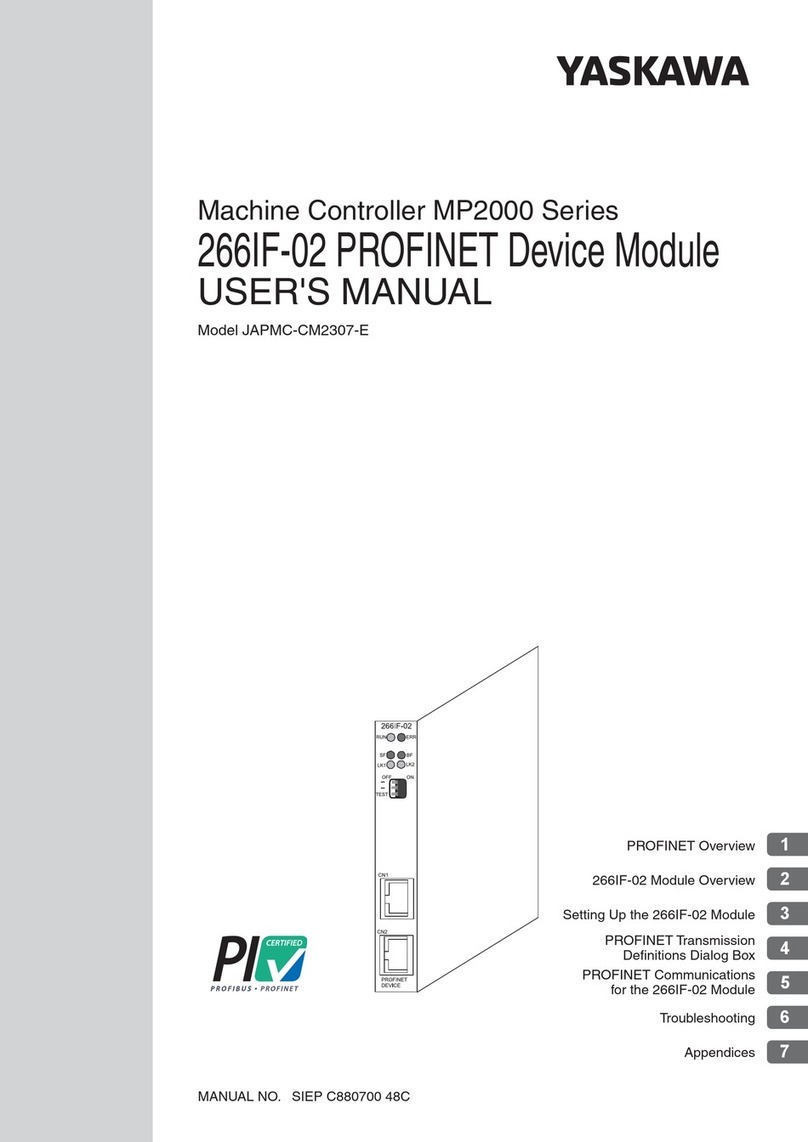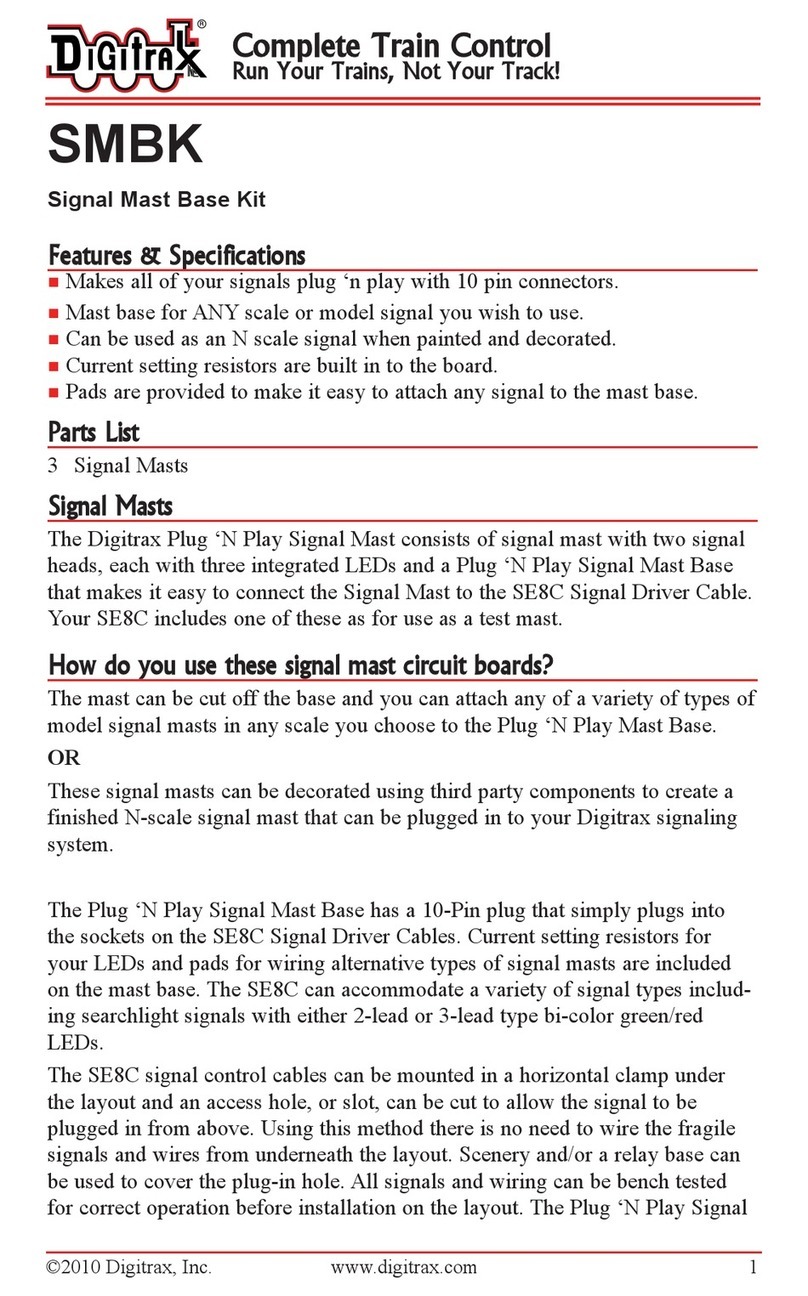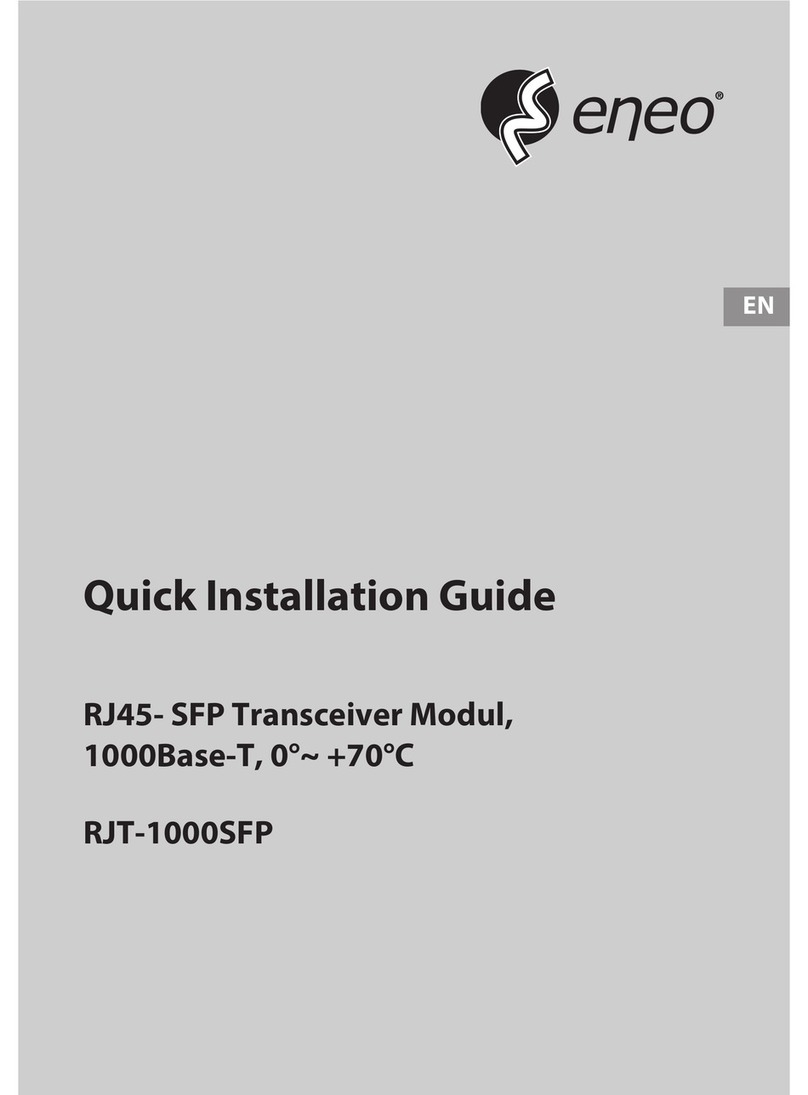SEA USER 1 - 24v DG R1 User manual

USER 1 24V DG MAXI
41121 REV. 4 2/21
CTC CT T D T D
nlis
International registered trademark n. 804888
SEA S.p.A.
ona Indstriale Sant Atto 42 eramo IA
elephone 1 41 a 1 44
.seateam.com
seacomseateam.com

DESCRIPTION OF THE COMPONENTS
CN1 = Input/Output connector
CN2 = Pre-wired limit switch connector
CN3 = Not Pre-wired limit switch connector
CN4 connector= Master/slave
CN5 = Courtesy light output connector
CN6 otors connector= M
CN7 = Batteries connector - Quick connection
CN8 = Power connector
CN9 = Jolly 3 connector
CNA = RX Receiver connector
CNE = Encoder connector
CNP = Programming connector
CNS = RF FIX receiver connector
EXP = External module connector
OK = Programming button
DOWN = Programming button
UP = Programming button
RL1 = Motors control relay
Rl2 = Motors control relay
RL3 = Light/dry output contact relay
PR1 = Rectifier bridge
F1 = Fuse 20 AT
Jp1 = Relay 3 activation
JP2 = Light/dry contact selection
Maximum motor current: 20A
Environment temperature: -20°C +50°C
156 mm
100 mm
RICEVENTE RX
JOLLY3
CN8 F1
CNA
CN9
CN5
CNP
RL1
CN4
UP DOWN OK
PR1
DISPLAY
EXP
POWER FUSE MOTOR LIGHT
MASTER/SLAVE
PROG
RADIO MODULE
JOLLY
CNE
ENCODER
1
CN7
RL2
CNS
CNS CN2
CN3
LIMIT SWITCH
- S +
RL3
JP2
JP1
CN1
CN6
TECHNICAL SPECIFICATIONS
Control unit power supply: 24 V~
Absorption in stand by: 30 mA
Specifications of external enclosure: 305 x 225 x 125 mm - Ip55
English

CONNECTIONS
JUMPERS
The herein reported functions are available starting from revision 02.02 compatible only with Jolly 3
123 4 5 6 7 8 910 11 12 13
CN1
Start
Stop
Common
Antenna
START Ped.
Common
Photocell 1
Common
ANT COM START
PEDST
STOP COM PH1 PH2
EDGE
AUX
COM 24V (FL)-
24V 750 mA max
(Accessori)
Safety edge
Flash (-)
Photocell 2
+ +
- -
123 4 5 6 7 8 910 11 12 13
CN1
ANT COM START
PEDST
STOP COM PH1 PH2
EDGE
AUX
COM 24V (FL)-
Start
Stop
Common
Antenna
START Ped.
Common
Photocell 1
Common
24V 750 mA max
(Accessori)
Safety edge
Flash (-)
Photocell 2
+ +
- -
Optional
WARNING: The control unit is designed with the automatic detection of not used N.C. inputs (photocells, Stop and Limit
switch) except the SAFETY EDGE input. The exclude inputs in self-programming can be restored in the “Check inputs”
menu without need to repeat the programming
Limit switch Cl.1 (Yellow)
Limit switch Cl.1 (Yellow)
24V (Red)
Common (White)
Limit switch Op.1 (Green)
Limit switch Op.1 (Green)
MOTOR (CN6)
Max 400W
ENCODER (CNE)
1
Brown
White
Green
AUX Programmable
(24V 300 mA max)
AUX Programmable
(24V 300 mA max)
1
LIMIT SWITCH
CN2
CN3
LIGHT (CN5)
Light/Dry contact
M
LIGHT (CN5)
Max 100mA
POWER (CN8)
24V~
RL3
JP2
JP1
*
*
*
*
*The indicated maximum load of 750 mA refers to the maximum load distributed on all 24V
outputs, including the on-board receiver absorption (300 mA)
English

QUICK SELF-EARNING
PROGRAMMING
Start quick programming
You can start the quick programming by
holding UP for 5 s in the “Input check
menu", until the motor starts.
“Input check
menu"
Fast self-learning START command by
radio control
You can store the START button of the
remote control while pressing DOWN for 5 s
in the “Input check menu".
Once the writing "Press button" appears,
press the button of the transmitter, which
you want to store for the START command.
By pressing OK, you can exit the menu,
otherwise it will be left automatically after 5
seconds.
DISPLAY
UP DOWN
5 s 5 s
---
--
---
UP DOWN
English

PROGRAMMING
BUTTONS
OK to exit
Menu or press
the button of
the next TX to
be stored
RECEIVER
MISSING
Skip this step if you do not want to program a transmitter
Choose the type of
motor with
UP or DOWN
To confirm and
return
to main menu
Choose "ON" with UP or
DOWN button only if in
programming the motor starts
in opening
With UP or DOWN
choose
the desired logic
With UP or DOWN
choose a delay for
automatic closing
With UP or DOWN
Choose ON
With UP or DOWN choose ON
to start times learning
At the end of the selflearning
the control unit returns automatically
to the main menu
With
UP or DOWN Choose
ON to start test
ALL OTHER PARAMETERS HAVE DEFAULT
SETTINGS WHICH ARE USEFUL FOR THE
90% OF THE APPLICATIONS BUT CAN BE
HOWEVER SET THROUGH THE SPECIAL
MENU. FOR ENTERING INTO THE SPECIAL
MENU MOVE ON ONE OF THE MENU AND
PRESS THE UP AND DOWN BUTTONS AT
THE SAME TIME FOR 5 SECONDS
If on the display
appears the item:
Check if a receiver
has been connceted
The gate will execute a CLOSING-OPENING-CLOSING CYCLE
PROGRAMMING
QUICK START
MENU
SEA
SET
MENU
SEA
SET
MENU
SEA
SET
MENU
SEA
SET
MENU
SEA
SET
MENU
SEA
SET
MENU
SEA
SET
MENU
SEA
SET
MENU
SEA
SET
MENU
SEA
SET
OK
1
2
3
5
6
7
8
9
OK
OK
OK OK
OK OK
OK OK
OK OK
OK OK
UP
UP
UP
UP
UP
UP
UP
OKOK
START
MENU
SEA
SET
MENU
SEA
SET
MENU
SEA
SET
OK
UP
LANGUAGE ITALIANO
UP
MENU
SEA
SET
MENU
SEA
SET
OK
END
15
MENU
SEA
SET
OK
SPECIAL
MENU
16
UP
UP
10
OK
DOWNUP
OK
Go back to menu
9-PROGRAMMING,
replace the gate halfway
and repeat the timing
programming
TRANSMITTERS
MOTOR
REVERSE
MOTOR
LOGIC
PAUSE
TIME
START IN
PAUSE
PROGRAM-
MING
TEST
START
If the motor has
magnetic limit switches,
select "Magnetic"
in the special menu:
104 - SELECT LIMIT SWITCH
PRESS
BUTTON STORED
Skip this step
if you want to work
in half-automatic
logic
To confirm and
return
to main menu
To confirm and
return
to main menu
To confirm and
return
to main menu
To confirm and
return
to main menu
To confirm and return
to main menu
Press OK to return to the
display of the inputs state
Press OK to enter the special menu
Press the
button of the
TX to be
stored
Skip this step if a TX has already been stored
English

The SLIM motor has no limit switches and works only with Encoder. For the stroke learning it is necessary
that the motor reaches the mechanical stops. Learning provides a CLOSE-OPEN-CLOSE cycle with
automatic detection of the mechanical stops. During normal cycle the motor will stop at about 1 cm from the
mechanical stop. This space will be regulated through the motor release parameter (menu 82).
Attention:
In case of a STOP command, power failure or obstacle detection, the motor will perform a closing maneuver
at low speed up to the mechanical stop in closing, to retrieve the position.
PROGRAMMING SLIM MOTOR WITHOUT LIMIT SWITCH
Fig. 1 Fig. 2
Fig. 3
Fig.4
1 2 3 4 5 6 7 8 9 1011 1213
WORKING TIMES SELF-LEARNING
WORKING TIME SELF-LEARNING ON MOTORS WITH LIMIT-SWITCH
PRELIMINARY NOTE: When using magnetic limit switches (such as on B-200 model), make sure that
the control unit is set on «magnetic limit switch» before learning:
MENU 104 - SELECT LIMIT SWITCH - “Magnetic”
1) Turn off the power supply, release the motor and place the door (or the barrier) manually at its mid run
2) Reset the mechanical lock
3) Select 9 - PROGRAMMING on the display, press OK and then one of the UP or DOWN buttons.
Now the gate will automatically execute a CLOSING-OPENING-CLOSING cycle
4) The self-learning is done
ATTENTION: If the motor starts in opening, remove and re-put power supply, select on the display
5-REVERSE MOTOR and through the UP and DOWN buttons select ON; if you have the Jolly3 programmer,
activate the motor exchange function and, only if present, limit-switch exchange function. If the motor starts
in closing and then it stops, remove the power supply and reverse the motor cables, then repeat the
programming procedure
ATTENTION: This procedure is potentially dangerous and should only be performed by qualified
personnel in safety conditions
The control unit is pre-set with DEFAULT settings. To start the control unit with the DEFAULT settings
just keep pressed the UP and DOWN buttons at the same time power supplying the control unit
till the display shows the message «INIT». The DEFAULT settings are shown in the Menu table
English

English
FUNCTION LOGIC
AUTOMATIC LOGIC
A start impulse opens the gate. A second impluse during the opening will not be accepted.
A start impulse during closing reverses the movement.
NOTE 1: To have the automatic closing it is necessary to set a pause time, otherwise all the logic will
be semi-automatic.
NOTE2: It is possible to choose, whether to accept or not, the start in pause, selecting in the MENU
the item 7-START IN PAUSE and choosing ON or OFF. By default, the parameter is OFF.
SECURITY LOGIC
A start impulse opens the gate. A second impulse during opening reverses the movement.
A start impulse during closing reverses the movement.
NOTE 1: To have the automatic closing it is necessary to set a pause time, otherwise all the logic will
be semi-automatic.
NOTE2: It is possible to choose, whether to accept or not, the start in pause, selecting in the MENU
the item 7-START IN PAUSE and choosing ON or OFF. By default, the parameter is OFF.
STEP BY STEP TYPE 1 LOGIC
The start impulse follows the OPEN-STOP-CLOSE-STOP-OPEN logic.
NOTE 1: To have the automatic closing it is necessary to set a pause time, otherwise all the logic will
be semi-automatic.
NOTE2: It is possible to choose, whether to accept or not, the start in pause, selecting in the MENU
the item 7-START IN PAUSE and choosing ON or OFF. By default, the parameter is OFF.
STEP BY STEP TYPE 2 LOGIC
The start impulse follows the OPEN-STOP-CLOSE -OPEN logic.
NOTE 1: To have the automatic closing it is necessary to set a pause time, otherwise all the logic will
be semi-automatic.
NOTE2: It is possible to choose, whether to accept or not, the start in pause, selecting in the MENU
the item 7-START IN PAUSE and choosing ON or OFF. By default, the parameter is OFF.
DEAD MAN LOGIC
The gate opens as long as the START button of opening is pressed; releasing it the gate stops. The gate
closes as long as the button connected to the PEDESTRIAN START is pressed; releasing it the gate stops.
To execute complete opening and/or closing cycles the related pushbuttons must be constantly pressed.
2 PUSHBUTTONS LOGIC
One start opens, one pedestrian start closes. In opening the closing will not be accepted. In closing a start
command reopens, a pedestrian start command (closes) will be ignored.
PASSWORD ENTERING MANAGEMENT
With a new control unit all menus can be displayed and set and the password will be disabled.
Selecting one of the Menus and keeping UP and DOWN pressed at the same time for 5 seconds, you will
access the SP Menu containing the 34-PASSWORD Menu. Pressing OK in the 34-PASSWORD Menu, you
will proceed with the entering of the numeric code of the 4-digit password. Use UP and DOWN to increase or
decrease the number, press OK to confirm it and you will pass automatically to the entering of the next
number. Pressing OK after the last entered number the word “Sure?” appears, confirm the activation of the
password and the message OK appears, pressing UP or DOWN instead you can cancel the operation and
“No operation” will appear on the display. Once entered the password, it will be definitively activated, once
the display switch off timeout has expired, or by turning off and on again the control unit. Once the password
has been activated, the menus of the display can be only displayed but not set. To unlock them you must
enter the correct password in the 34-PASSWORD menu, if the password is wrong the message “Error” will
appear. At this point, if the password has been entered correctly, the menus will be unlocked and it will be
possible to change the parameters of the control unit again. If the control unit has been unlocked through 34-
PASSWORD Menu, it is possible to enter a new and different password, using the same entering process as
for the first one; at this point, the old password will no longer be valid. If the password has been forgotten, the
only way to unlock the control unit is to contact the SEA technical assistance, which will assess whether to
provide the procedure to unlock the control unit or not.
Note: The password cannot be set through the Jolly 3 terminal.

SET DESCRIPTION
DEFAUL
T
SET
VALUE
Italiano
Italian
English
English
Français
French
Español
Spanish
Dutch
Dutch
Start
Start
Partial opening
Partial opening
External module
External module
Stop
Stop
Bistable Stop
Pressed once, it stops the gate. Pressed twice,
it reactivates the START input
Unloch
Storing of a command for unlocking the
electric brake
Delete a transmitter
Delete single transmitter
Clear memory
Delete transmitter memory
End
“Transmitters” menu output
Saturn Fast
Saturn Super Fast
Saturn Fast
Saturn Super Fast
Joint * Joint
Hydraulic Unit Hydraulic Unit
Lepus Box Chain * Lepus Box Chain
Slim * Slim
B-800 * B-800
Saturn 1500
Lepus 2000
Saturn 1500
Lepus 2000
Barrier FC slow-down
Barrier with limit-switch as electronic slow-
down
Orion Box Fast Orion Box Fast
On
In On reverses the opening with the closing
and/or vice-versa (Note: both motors and limit-
swich are reversed)
Off Off
Automatic
Automatic
Open-stop-close-stop-open
Step by step type 1
Open-stop-close-open
Step by step type 2
2 button
Two buttons
Safety
Safety
Dead man
Dead man
Off
OFF (semi-automatic logics)
1 240
Setting from 1 second to 4 minutes
Off
The Start is not acceped during pause
On
The Start is acceped during pause
9
PROGRAMMING Off On Times learning start Off
10
TEST START Off On Start command Off
14
RESET
15
END
16
SPECIAL MENU
USER 1 24V DG MAXI MENU FUNCTIONS TABLE
MENU
1
LANGUAGE
English
5
REVERSE MOTOR
Off
2
TRANSMITTERS
Start
Partial
Opening
3
MOTOR
Saturn
1500
Lepus
2000
8
START IN PAUSE
Off
A count-down of 5 seconds will start by keeping pressed the UP button; at its end "INIT" will
appear on the display as confirmation of the control board reset
Press OK to return to the display of the firmware version
and to the one of inputs state
6
LOGIC
Open-
stop-
close-
open
7
PAUSE TIME
Off
Press OK to enter the special menu

SET DESCRIPTION
DEFAUL
T
SET
VALUE
17 OPENING SPEED 1 30 100 Setting from 30 to 100 70
18 CLOSING SPEED 1 30 100 Setting from 30 to 100 70
21
SLOWDOWN SPEED IN
OPENING 1
30 100 Setting from 30 to 100 40
22
SLOWDOWN SPEED IN
CLOSING 1
30 100 Setting from 30 to 100 40
25 LEARNING SPEED 30 100 Setting from 30 to 100 75
28
OPENING TORQ 1 10 100
Opening torque Motor 1: by increasing the
torque, more strenght will be required to
execute the inversion in case of obstacle.
Note: with hydraulic motors the torque will be
on 100%
Self
learned
during
Program-
ming
29
CLOSING TORQ 1 10 100
Closing torque Motor 1:by increasing the
torque, more strenght will be required to
execute the inversion in case of obstacle.
Note: with hydraulic motors the torque will be
on 100%
Self
learned
during
Program-
ming
32
ENCODER On In ON enables the Encoder, in OFF it's disabled On
47 ENCODER PAR. 1 xxx.
48 ENCODER TOT. 1 xxx.
32
ENCODER Potentiometer
Enables the reading of the potentiometer with
LE card
Off
51 I.PAR.M1 - - - - - - - -
52 I.AP.M1
From the value learned
to ± 100 pulses
53 I.CH.M1
From the value learned
to ± 100 pulses
32
ENCODER Off
ON enables the Encoder; OFF shows working
times learnt
Off
10% (Fast intervention)
99% (Slow intervention)
Adjusts the Encoder or Potentiometer
intervention time on Motor 1 in opening
Off (Intervention excluded)
Disabled
10% (Fast intervention)
99% (Slow intervention)
Adjusts the Encoder or Potentiometer
intervention time on Motor 1 in closing
Off (Intervention excluded)
Disabled
10% (Fast intervention)
99% (Slow intervention)
Adjusts the amperometric sensitivity in
slowdown. Active only on barriers
(300ms - 3s)
30%
Total
In case of obstacle or edge it totally rever-ses
the movement during the closing. If active, the
automatic reclosing will be attempted 5 times
Partial
It partially reverses the direction (of about 30
cm) in case of obstacle or edge or
potentiometer, then it stops
SPECIAL MENU
PRESS AT THE SAME TIME FOR 5 SECONDS TO ENTER OR TO EXIT THE SPECIAL MENU
SPECIAL MENU FUNCTIONS TABLE USER 1 24V DG MAXI
For entering into the special menu move on one of the menu and press the UP and DOWN buttons at the same time for 5 seconds
For exiting the special menu press END or move on one of the menu and press the UP and DOWN at the same time for 5 seconds
MENU
Impulses read by Encoder during operation (Motor1)
Impulses stored during programming (Motor 1)
33
OPENING SENSITIVITY
MOTOR 1
35%
Reports the current position of the potentiometer on the leaf
of motor 1. This parameter is useful for seeing if the
potentiometer is read correctly
Reports the impulses stored by the control unit when the leaf
of Motor 1 is fully open
Reports the impulses stored by the control unit when the leaf
of Motor 1 is fully close
37
SLOWDOWN SENSITIVITY
MOTOR
(For Barriers only)
34
CLOSING SENSITIVITY
MOTOR 1
35%
46
CLOSING INVERSION
Partial
For menu 47 and 48 see menu 32-Encoder = On
For menu from 51 to 53 see menu 32-Encoder = Potentiometer
UPDOWN

SET DESCRIPTION
DEFAUL
T
SET
VALUE
57
WORKING CURRENT 1 _ _ _ _ _
Shows the absorbed current by the motor
during the movement. The letter H at the
left of the current value indicates the
exceeding of the set inversion threshold
59
OPENING SLOWDOWN 1 Off (*) 100 From OFF to 50% of the stroke 30
60
CLOSING SLOWDOWN 1 Off (*) 100 From OFF to 50% of the stroke 30
63
DECELERATION
Only on *marked motors
0 %
100%
Adjust the passage between normal speed and
slowdown speed
According to
the motor
64
ACCELERATION 0 %
100%
Acceleration ramp.
Adjusts the motor start 70%
70
OPENING POSITION
RECOVERY
0 15 seconds
Retrieves the inertia of the motor in opening
after Stop or reversing
6s
71
CLOSING POSITION
RECOVERY
0 15 seconds
Retrieves the inertia of the motor in closing
after Stop or reversing
6s
72
OPENING TOLERANCE
MOTOR 1
0 100
Adjust the tolerance between stop and
obstacle on Motor 1 in opening
0
73
CLOSING TOLERANCE
MOTOR 1
0 100
Adjust the tolerance between stop and
obstacle on Motor 1 in closing
0
Only opening
Only closing
Opening and closing
Off
Off Disabled
1 100 Ajustable from 1 to 100
Only closing
Pre-flashing only active before closing
0.0 5.0 s
Pre-flashing
Normal
Normal
Light
Control lamp
Always
Always ON
Buzzer
Buzzer
Off
The flashing light remains OFF with the active
timer and open gate
On
The flashing light remains ON with active timer
and open gate
1 240
Courtesy light setting from 1sec. to 4min.
In cycle
Courtesy light in cycle
Dry contact
Activation 1 second after every Start pulse in
cycle, for the time set
Always
Activation always 1 second after every Start
pulse, independently of settings
89
TRAFFIC LIGHT
RESERVATION
Off On
If ON, the partial input will be activated to
work on the auxiliary board "SEM" (traffic light
management)
Off
90
PARTIAL OPENING 20 100 Setting from 20 to 100 30
= Start
Pause in partial opening same as in total
opening
Off
Disabled
1 240
Setting from 1second to 4 minutes
Off
On photo2
On partial entry
* For motors with hydraulic brake (CF) or double hydraulic brake (2CF) this parameter must be on Off
79
ANTI INTRUSION
If you force the gate manually, the control unit
starts the motor to restore the state of the
gate before forcing (only with limit switch)
Off
86
FLASHING LIGHT
Normal
87
FLASHING LIGHT AND
TIMER
Off
82
MOTOR RELEASE
Off
85
PRE-FLASHING
Off
92
TIMER
Turn the selected input into an input to
connect an external clock to
Off
88
COURTESY LIGHT
91
PARTIAL PAUSE
= Start
MENU

SET DESCRIPTION
DEFAUL
T
SET
VALUE
Always
AUX output always Power supplied
In cycle
AUX output active only during cycle
Opening
AUX power supplied only during opening
Closing
AUX power supplied only during closing
In pause
AUX power supplied only during pause
Fototest
Security test
In cycle and phototest
AUX output only during cycle with fototest
function active
Positive brake management
Positive Electric-brake (24V in On with
stationary gate )
Negative brake management
Negative Electric-brake (24V in On with gate in
cycle and 1 sec. before the Start)
Negative brake and Photocell
management
Negative electric-brake not active on
intervention of the photocell
Open gate warning Light
1 flash per second in opening
2 flashes per second in closing
Steady lit in Stop or Open
Start 3 s
If active, the 24VAUX output is activated for 3
seconds at every Start input, every photocells
or edge intervention
Barrier Led lights
the 24Vaux output will pilot the lights on the
barrier so that, with the beam closed the light
is on, with the beam opened the light is
switched off and with the moving beam the
light is blinking
Photo 1
Self-test active only on photo 1
Photo 2
Self-test active only on photo 2
Photo 1 and 2
Self-test active on photo 1 and 2
Closing
If the photocell is occupied, it reverses the
movement in closing; during the pause, it
prevents the reclosing
Opening and closing
The photocell blocks the movement as long as
it is occupied;when released, the opening
movement continues
Stop
If the photocell is occupied before the Start
input, the Start will be ignored. If the photocell
is occupied after the Start input, the photocell
will be ignored. If the photocell is occupied
during closing, the gate will reopen
97
PHOTOCELL 1
SHADOW LOOP 1
Stop and close
In closing, the photocell stops the movement
until it is occupied; when released the closing
movement continues
Closing
Close
The photocell stops the gate until it is oc-
cupied in both opening and closing; when
released, it gives a closing command (it closes
one second after its release)
Pause reload
If occupied during pause the photocell
recharges the time of pause. In closing it
reverses the movement
Delete pause time
If occupied during opening, pause or closing,
the gate reopens completely and closes
without observing the pause time
94
24V AUX
(Max. 500 mA)
Always
95
FOTOTEST
Off
MENU

SET DESCRIPTION
DEFAUL
T
SET
VALUE
Closing
If the photocell is occupied, it reverses the
movement in closing; during the pause, it
prevents the reclosing
Opening and closing
The photocell blocks the movement as long as
it is occupied;when released, the opening
movement continues
Stop
If the photocell is occupied before the Start
input, the Start will be ignored. If the photocell
is occupied after the Start input, the photocell
will be ignored. If the photocell is occupied
during closing, the gate will reopen
Stop and close
In closing, the photocell stops the movement
until it is occupied; when released the closing
movement continues
Close
The photocell stops the gate until it is oc-
cupied in both opening and closing; when
released, it gives a closing command (it closes
one second after its release)
Pause reload
If occupied during pause the photocell
recharges the time of pause. In closing it
reverses the movement
Delete pause time
If occupied during opening, pause or closing,
the gate reopens completely and closes
without observing the pause time
Stop and open
If the photocell is activated during opening,
the gate will stop and will continue opening
movement only when the photocell is
released. The photocell is ignored during
closing
Security edge 2 Photo 2 input can also work as security edge
99
PHOTO OFF IN CLOSING 0 % 50% Setting from 0% to 50% of the learnt space 0
Normal
Normal N.C. contact
8K2
Edge is active and protected by a 8K2 resistor
8K2 Double
Allows to connect two 8K2 protected edges
Photo 1 10K
Edge works as a photocell protected by a10K
resistor
Opening and closing
Active in opening and closing
Only opening
Active only in opening
Only closing
Active only in closing
Opening and closing
Active in opening and closing
Only opening
Active only in opening
Only closing
Active only in closing
Mechanical
Mechanical limit-switch
Magnetic
Magnetic limit-switch
Slow-down
It uses the limit switch inputs as starting point
of slow-down, so the limit switch impulse
must be given manually or detected by the
stop
102
SECURITY EDGE 1
DIRECTION
Opening
and
Closing
98
PHOTOCELL 2
SHADOW-LOOP2
Stop
and
open
100
SECURITY EDGE 1
Normal
MENU
103
SECURITY EDGE 2 DIREC-
TION (only if menu-98 is set
on "Security edge 2")
Opening
and
Closing
104
SELECT LIMIT SWITCH
Automa-
tic

SET DESCRIPTION
DEFAUL
T
SET
VALUE
Master
On applications with two motors in master-
slave, it allows to set the control unit as
master
Slave
On applications with two motors in master-
slave, it allows to set the control unit as slave
Off Disabled
106
DIAGNOSTICS 1 10 Shows last event (See alarms table)
107
MAINTENANCE CYCLES 100 240000 Setting from 100 to 240000 100000
108
PERFORMED CYCLES 0 240000
Reports the executed cycles. Keep pressed OK
to reset the cycles
0
112
PASSWORD - - - -
Allows the entering of a password blocking the
control unit parameters modification
- - - -
Off Disabled
Emergency
Without main power but batteries connected,
the gate will open fully and will remain open.
The gate recloses when the power is back
Last opening
Without main power, if batteries are lower
than 22V the gate opens and stay opened. The
gate recloses when the power is back
Last closing
Without main power, if batteries are lower
than 22V the gate closes and stay closed until
the power is back
117 ALWAYS CLOSE Off 240 seconds
In the event of a power failure, if the door has
been manually opened, it closes only after the
set time has elapsed (from 0 to 240 s), as soon
as the power is restored
Off
119
DISPLAY WRITING SPEED From 30% to 100% See Note 3 below 80%
120
BASIC MENU
MENU
Note 1: The *indicates that the default value or the menu may change depending on the selected motor type.
Note 2: After initialization the parameters "motor type" and "limit switch type" remain on the value chosen in the setup
program.
Note 3: Display writing speed set on 30% keeps writing slow; Display writing speed set on 100% keeps writing fast.
Please note that speed does not change on JOLLY 3 display.
Press OK to exit the special menu.
The special menu switches off automatically after 20 minutes
105
MASTER-SLAVE
Off
113
EMERGENCY
(This fuction involves the
use of "STAR 1000" with
"LB" unit)
Off

Initial system
Software Version
Programming example
DISPLAY INPUT STATUS
W h e n t h e
segment is ON
d u r i n g s e l f -
le a rni n g, th e
input status is
closed or OFF
Start
pedestrian
Photocell 1
Photocell 2
Edge 1
MENU
SEA
SET
- - -
- -
- - -
Start
Stop
Limit
Switch
opening
motor 1
Limit
Switch
closing
motor 1
VERG
UP
OK
UP
UP
UP
DOWN
DOWN
DOWN
OK
OK
OK
DOWN
SLIDING
JOINT
UP
U.001
MOTOR
LIMIT SWITCH
CLOSING
LIMIT SWITCH
OPENING
MENU
START
Description Description
EDGE
PHOTO1
PHOTO2
END
Start test
Safety edge
test
Photocell 1
test
Photocell 2
test
Opening
limit switch
test
Closing
limit switch
test
The contact must be a N.O. Contact . When activating the related
command on the display SET lights up, the input works.
If SET is always on, check the wirings.
The contact must be a N.C. Contact. When activating the related
command on the display SET lights up, the input works.
If SET is always on, make sure that the contact is a N.C. Contact
The contact must be a N.O. Contact. When activating the related
command on the display SET lights up, the input works.
If SET is always on, check the wirings.
The contact must be a N.C. Contact. When activating the related
command on the display SET lights up, the input works.
If SET is always on, make sure that the contact is a N.C. Contact
Ithe contact must be a N.C. Contact. When activating the related
command on the display SET lights up, the input works.
If SET is always on, make sure that the contact is a N.C. Contact
The contact must be a N.C. Contact. When activating the related
command on the display SET lights up, the input works.
If SET is always on, make sure that the contact is a N.C. Contact
Exit menu
OK
OK
MENU FUNCTION TABLE CHECK USER 1 24V DG MAXI INPUTS
To access the Menu for input check keep pressed OK for about 5 seconds.
OK
0.0V
Batteries
Voltage
Level
Note: If the Stop, Photocell 1 and Photocell 2, Edge 1 contacts are not bridged in self-learning,
they will be deactivated and can be reactivated through this menu, without repeating times self-learning
The contact must be a N.C. Contact. When activating the related command on
the display SET lights up, the input works. If SET is always on, make sure that
the contact is a N.C. Contact. Menu active only on version with limit switches
Enabled
Enabled
Blocked
Blocked
Enabled
Blocked
Enabled
Blocked
Pedestrian
Start test
STOP OK
OK
START
PEDESTRIAN
OK
Enabled
Blocked
Enabled
Blocked
Stop test
Batteries charge level indicator
The contact must be a N.C. Contact. When activating the related command on
the display SET lights up, the input works. If SET is always on, make sure that
the contact is a N.C. Contact. Menu active only on version with limit switches
INPUT CHECK MENU
The settings of the control unit are made through the UP, DOWN and OK buttons. The UP and DOWN
buttons to scroll through the MENUS and SUBMENUS. By pressing OK you enter from MENU into
SUBMENU and confirm the choice. Moving in the 1-LANGUAGE menu pressing the UP and DOWN buttons
at the same time you access the SP MENU for special settings. Moving in the 1-LANGUAGE menu pressing
the OK button for 5 seconds, you enter the CHECK MENU, where you can check the operating status of all
inputs.
English

RADIO TRANSMITTER SELF LEARNING
WITH RECEIVER ON BOARD OF CONTROL UNIT
!
WARNING: Make the radio transmitters programming before you connect the antenna and insert
the receiver into the special CMR connector (if available) with turned off control unit. With RF UNI
and RF UNI PG module it will be possible to use both Coccinella Roll Plus transmitters and radio
transmitters with fixed code. The first memorized radio transmitter will determine the type of the
remaining radio transmitters. If the receiver is a Rolling Code, press twice the button of the radio
transmitter that you want to program to memorize the first TX. In the case of transmitters with fix code it is
necessary to press 1 time the button of the transmitter you want to program to store the first remote control
Notes:
- Enter radio transmitters learning only when the working cycle stops and the gate is closed.
- You can store max. 2 of the available 4 functions. If the control unit receives a code which was already
associated to another function it will be updated with the new function.
TABLE EXAMPLE
Transmitter
button
Memory
location
Serial
number Customer
MENU
SEA
SET
MENU
SEA
SET
MENU
SEA
SET
UP
MENU
SEA
SET
MENU
SEA
SET
MENU
SEA
SET
MENU
SEA
SET
UP
MENU
SEA
SET
MENU
SEA
SET
UP
MENU
SEA
SET
MENU
SEA
SET
MENU
SEA
SET
UP
MENU
SEA
SET
MENU
SEA
SET
UP
MENU
SEA
MENU
SEA
SET
MENU
SEA
SET
MENU
SEA
SET
SET
START
PEDESTRIAN
START
EXTERNAL
MODULE
STOP
DELETE A
TRANSMITTER
0OK? OK
CLEAR
MEMORY OK
PRESS
BUTTON STORED
STORED
STORED
STORED
PRESS
BUTTON
PRESS
BUTTON
PRESS
BUTTON
If you want to program the
pedestrian start as second
channel
If you want to delete
a single transmitter
If you want to delete
the whole memory
If you want to program the
activation of the LIGHT
output as second channel
Press the
button of the
transmitter
to be stored
Press the
button of the
transmitter
to be stored
Press the
button of the
transmitter
to be stored
Select with
UP or DOWN
the memory
location
to be deleted
and press OK
Press the
button of the
transmitter
to be stored
If you do not want to execute the
cancellation, press UP or DOWN to
return to the 2-TRANSMITTER menu
Confirm the cancellation
If you want to program the
UNLOCH as second channel
MENU
SEA
SET
MENU
SEA
SET
UP
MENU
SEA
SET
UNLOCH STORED
PRESS
BUTTON
Press the
button of the
transmitter
to be stored
If you want to program the
STOP as second channel
OK
for 10 s.
MENU
SEA
SET
OK
TRANSMITTERS
OK
MENU
SEA
SET
If you want to exit the
2-TRANSMITTERS menu
END
MENU
SEA
SET
OK
UP
OK
OK
OK
OK
OK
OK
OK
Menu output
RF UNI 16 USERS Whitout memory
800 USERS With additional memory MEM
RF UNI PG 100 USERS Fixed code
800 USERS Roll Plus
RF UNI PG 800 UTENTI Fixed code
800 UTENTI Roll Plus
New model
Old Model
12 3 4
0
1
2
3
English

RADIO TRANSMITTER SELF LEARNING
WITH RF FIX RECEIVER ON BOARD OF CONTROL UNIT
Connect the receiver on
the CNS connectors,
making sure that the
direction is the
one shown in the
illustration
WARNING: Make the radio transmitters programming before you connect the antenna
and insert the receiver into the special CNS connector (if available) with turned off control unit.
With the RF FIX module it will be possible to use only radio controls with fixed code.
Select through the display 2-TRANSMITTERS and press OK, now select with the UP and DOWN buttons,
the command to which you want to associate the button (it is possible to associate max. 2 commands) and
press OK to confirm the choice, now press the button of the radio transmitter which you want to associate. If
the storage is successful, the display will show “Stored” .
In the 2-TRANSMITTERS MENU it is possible to select “Start” (to associate a Start command), “Pedestrian
start” (to associate a Pedestrian Start ), “External Module” (For the activation of a contact on the EXP
output), “Stop” (To associate the STOP command to the TX), “Unloch” (to associate the release of the
electric brake to the transmitter), “Delete a transmitters” (To delet the single transmitter only if it is a Rolling
Code Plus), “Clear memory” (To delete all TX), “End” (To exit menu 2-TRANSMITTERS). To release the
electric brake it is necessary to give three consecutive pulses, the 4th will reactivate the lock of the electric
brake.
Notes:
- Enter radio transmitters learning only when the working cycle stops and the gate is closed.
- It will be possible to memorize up to max. 16 codes (buttons) adding the MEM memory it will be possible to
store up to 496 different codes.
- You can store max. 2 of the available 4 functions. If the control unit receives a code which was already
associated to another function it will be updated with the new function.
DELETE TRANSMITTERS FROM THE RECEIVER
With modules different from RF FIX, it will be possible to delete only the entire memory of the receiver.
Proceed as follows: select from the menu 2-TRANSMITTERS: “Clear memory” and hold the OK button until
the display shows the message “OK”.
!
CNS
CNS
English

START - STOP - PEDESTRIAN START - ANTENNA - PHOTOCELL
SAR .. he SAR is connected eteen the clamps 2 and of the 1 terminal.
An impulse given to this contact opens and closes the automation depending onthe selected logic it can be given b a e switch,
a epad, etc. To connect the other devices refer to the related instructions leaflets. (ie. loop detectors and proximit switches).
ote1: In DEAD MAN logic it is necessar to eep pressed the Start for the opening of the automation.
ote2: In 2 BUTTONS logic this button performs the opening.
S .. he S is connected eteen the clamps 2 and of the 1 terminal .
The pressure on this button immediatel stops the motor in an condition/position. A start command is needed to re-start the
movement. After a stop the motor alwas re-starts in closing.
Can be activated through the on-board displa or through the oll programmer. In both cases its a N.O. contact which
provoques the opening of the automation eeping it open until it is activated. hen it is released, the gate attends the
set pausing time and executes the reclosing. The TIMER command can be activated on the inputs PHOTO2, PARTIAL
OPENIN START
ote1: hen activated on the pedestrian entr, the pedestrian will be disabled also on the radio transmitter.
ote2: In case of intervention of a securit device during the timer (Stop, Ammeter, Edge), to restore the movement it will be
necessar to give a start impulse.
ote: In case of no power suppl with open gate and active Timer the control unit will restore its use, otherwise if during restore
of the power suppl the TIMER is not activated it will be necessar to give a start impulse for the reclosing.
EDESRIA SAR .. he pedestrian start can e connected eteen the clamps 2 and 4 of the 1 terminal .
This input allows a partial opening the opening space can be set through the on-board displa or through the OLLY device.
ote1: The contact for partial opening is a N.O. Contact (Normall open).
ote2:In 2 BUTTONS logic it is necessar to eep pressed the Start Ped. to re-close the automation.
ote: In dead man logic this button executes the re-closing if ou eep it pressed.
ote4: hen closed during pause, the gate will reclose onl after this input has been reopened.
IMER actiation: This input can be transformed into TIMER (See TIMER).
hotocell 1 and hotocell 2 onnections
+ 24 (Accessories) max 750mA COM 0
PH1 Photocell contact 1 PH2 Photocell contact 2
ote: Self-test: connect the T to the AU clamp and activate the Autotest function. The
photocell 1 default setting is FOTO CLOSE and the photocell 2 one is FOTO OPEN. The
photocell 2 can be set also as TIMER (see TIMER function).
ote On the 26-FOTOTEST menu ou can also activate the self-test even on the single
photocell.
IS 1 and 2 adstale on displa see men or oll
SE actiation losin: if occupied, reverses the movement in closing,
during pause it prevent the closing.
Actiation repeat pase ase reload: If occupied, during pause it recharges the
timer of pause. In closing it reverses the movement.
E AD SE actiation penin and closin If activated the
photocell blocs the movement as long as its bus, when released the opening
continues.
AR actiation Stop and close : in opening it is not active in pause are
activated it commands the closing when released, otherwise its not active in closing it
stops the movement as long as it is bus, when released the closing continues.
S actiation Stop: hen activated before the opening the photocell
blocs the automation as long as it is bus, during the opening it will be ignored. In
closing the intervention of the photocell causes the reopening.
Actiation SE IMMEDIAE lose: The photocell stops the gate as
long as it is occupied in both opening and closing, when released, it gives a closing
command (Closing one second after release of the photocell ).
Common
Partial opening
Common
ptions AUX 24V ma 2mA can e set on displa
see men 4 or oll
Through the oll programmer it is possible to chose when having tension on
the AU output. The options are: Alwas, In ccle, Opening, Closing,
In pause, Fototest and In ccle and fototest. hen using control units
with batteries and/or solar panels, we recommend connecting the accesso-
ries which are not used when operator stands still (e.g. photocells) to a AU
output, setting the option In ccle. ith this setting ou can save energ b
lowering power consumption in stand-b, increasing the autonom of the
sstem.
Antenna
Start
Stop
Photocell 1
1 2 4
Photocell 2
RX1
RX2
X1
X2
1 11 12 1
Common
24V (Accessories)
IMER
1
1
Dela pase timeactiation: If the photocell is occupied during
opening, pause or closing, the gate reopens completel and closes
without observing the pause time.
nlis

English
WARNING LAMP - SAFETY EDGE - 10K PHOTOCELL - BUZZER
Edge
Common
24V (Accessories)
Example of a Flashing Lamp
and an Edge connections
10K
Photocell
9 10 11 12 13
Edge
BROWN
Common
FL(-)
24V (Accessories)
-
+
BUZZER
BLU
WHITE
GREY
E
Example of a 10K Photocells
and a Buzzer connections
MENU
SEA
SET
100-EDGE 1
MENU
SEA
SET
PHOTO 10K
.
OK
MENU
SEA
SET
OFF
Setting
10K Photocell
MENU
SEA
SET
100-EDGE 1
OKOK
MENU
SEA
SET
PHOTO 10K
.
MENU
SEA
SET
UPUP
OFF
SAFETY EDGE 9 and 11
Between clamps 9 and 11 on the terminal CN1 it is possible to connect an active Safety Edge. When
pressed, the Safety Edge opens the contact causing a partial inversion of the movement both in opening
and in closing. The Safety Edge output can be set «only in closing», «only in opening» or both directions
Note1: Note1: Through the on-board display or the JOLLY 3 programmer it is possible to activate the
balanced edge 8K2, in this case the edge contact is controlled by a special resistance value revealing the
eventual involuntary short- circuit of the device. In case of imbalance of the device a special alarm will be
shown on the on-board dispaly or on the JOLLY programmer.
Note2: Self-test can be made also on a radio powered Edge (See Auto-test Menu)
BUZZER 24V - Audible Alarm - 12 and 13
Use an autoswinging buzzer 24V of 100 dB. The buzzer will be switched on after two consecutive
activations of the entrapment protection. To reset the allarm it is necessary to push the button STOP.
Anyway after 5 minutes the buzzer will stop to sound and the automation stands still waiting for commands.
!
24V FLASHING LAMP 3W MAX 12 and 13
Flashing Lamp 24V (Accessories) 3W Max (Control lamp)
The Flashing Lamp can be connected between the 24V clamps
(Accessories) and FL (-) of CN1. The Flashing lamp advises that the
automatic gate is moving with 1 flash/second in opening and 2
flashes/second in closing. During pause it remains switched on.
Through the warning lamp it is also possible to identify alarms lied to
the STOP, PHOTOCELL 1, PHOTOCELL 2 and EDGE devices.
Through the display or the JOLLY 3 programmer it is possible to acti-
10K PHOTOCELL 9 and 11
Between clamps 9 and 11 on the terminal CN1 it is also possible to
connect a 10K Photocell. In this case it is necessary to set it on menu
100 - EDGE as Photo10K, then it will run following settings on menu
97 - PHOTO 1.
Nota1: The use of a 10K Photocell allows to get further protection in
case of short-circuit on the cables.
FL(-)
9 10 11 12 13
CN1
vate the pre-flashing function and/or to modify
the function of the warning lamp choosing
between fix flashing or control lamp.
The pre-flashing can be timed from 0 to 5
seconds otherwise it is possible to set it
before closing only
CN1
Safety edge
If Buzzer does not work, check the 86-FLASHING LIGHT menu is set on “Buzzer”
IMPORTANT NOTE:
INSTEAD OF THE FLASHING LAMP, IT IS POSSIBLE TO CONNECT A BUZZER;
REMEMBER TO SET THE 86 - MENU ON « BUZZER »

nlis
SAFETY LOOP CONNECTIONS
MAGLOCK 12V CONNECTIONS
DRAIG SS
EVEUA E E
MAGEI
Safety exit
loop 1
Loop1
Loop2
Loop3
Shadow
loop 2
Free exit
loop 3
1 11 12 1
1 2 4
1
12
Safet eit loop loop 1
Connecting scheme of
loop detector 1 reader
7 Contact photocell 1 (N.C.)
6 Common
Shado loop loop 2
Connecting scheme of
loop detector 2 reader
8 Contact photocell 2 (N.C.)
6 Common
ote lease set
TC
men to ado loop
ree eit loop loop
Connecting scheme of loop
detector reader
3 Contact start (n.o.)
6 Common
1 A E
2 A SED
12 24 V
V
Brown
Green
Pink
Yellow
Grey
T
or ot elay Card
types it is
necessary to set
men
on neatie rake
manaement MagLoc
M
1 11
1 2 3 4 5 6 7
AUX
1 1
M
M
12V D
MagLoc
M
1
AUX
1 24Vdc
M
M
Eternal poer sppl 12V / 24V D
elay Card
Type
elay Card
Type
Eternal
poer sppl
12V / 24V D
-C2
C1
C
C2

+
(BAT)
+
-
GND
PSOL
BAT 28VGND
1
+
-
S
+
ND
Solar Panel
Batteries
12 12
= charge 200mA
~
~
= charge 360mA
= charge 800mA
~
ode 2111
ode 21114
E SU
E SU
S 28VGND
1
+
ND
Solar Panel
PSOL
GND
+ Bat- Bat
= charge 200mA
~
~
= charge 360mA
= charge 800mA
~
USER 1
24V DG
MAXI
+
-
+
-
Batteries
12 12
ote To connect
the USER 1 24
D MAI control
unit with quic
connectable
charger to an old
batter charger,
ou must use the
CN adapter
cable
IMRA o connect the atteries alas se the atter charer
CONNECTION OF BATTERIES TO BATTERY CHARGER CARD
28 Batter charger
Positive batter
Negative batter charger
atter crrent mA atter Ah
Insert two 12 batteries connected in series
800
360
200
12 or 16
7
2
Specifications of optional atteries 24 Pb
EXTERNAL RECEIVER
Eample onnection
of a radio receier
For the connection of
the receiver refer to the
relative instructions
manual
Common
Common
24V (Accessories)
1 2 4 1 11 12 1
1
Start
Start ped.
+
-
nlis
Other manuals for USER 1 - 24v DG R1
5
Table of contents
Other SEA Control Unit manuals

SEA
SEA SLIDE NEW MAG User manual
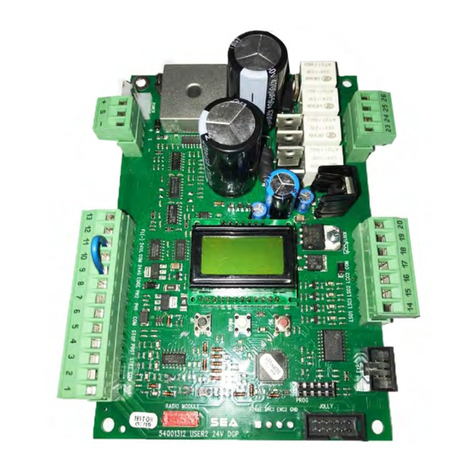
SEA
SEA USER 2 24V DG R1B ALL-IN User manual
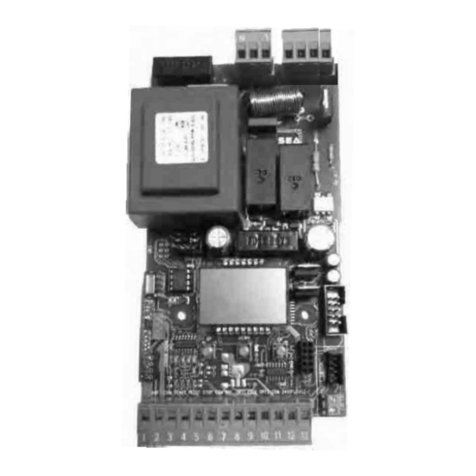
SEA
SEA SLIDE DG R2F User manual

SEA
SEA SLIDE DG R2F User manual
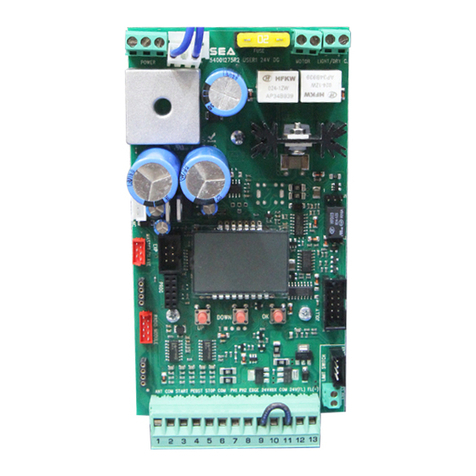
SEA
SEA USER 1 - 24v DG R1 User manual

SEA
SEA 23001157 User manual

SEA
SEA 9521 User manual
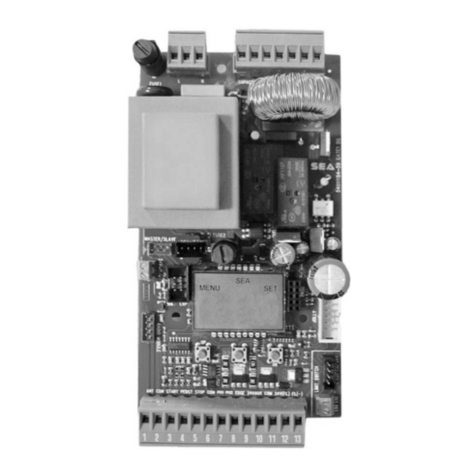
SEA
SEA GATE 1 DG R2BF User manual
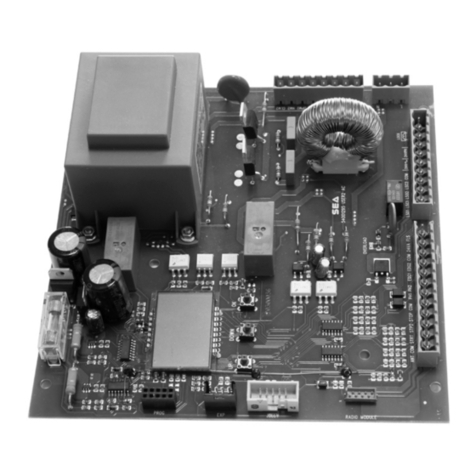
SEA
SEA GATE 1 DG R1 User manual
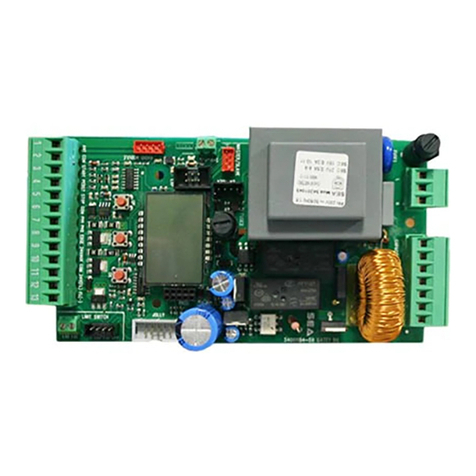
SEA
SEA GATE 1 DG R1 User manual
Popular Control Unit manuals by other brands
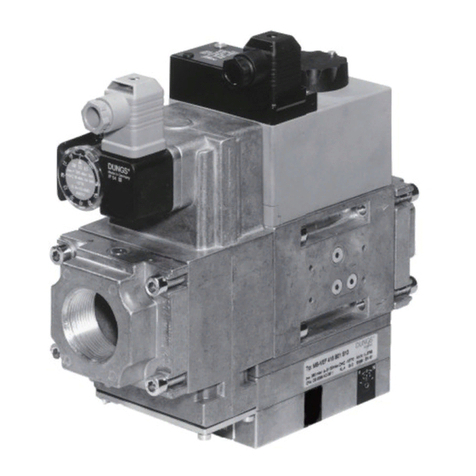
Dungs
Dungs GasMultiBloc MB-VEF B01 instructions
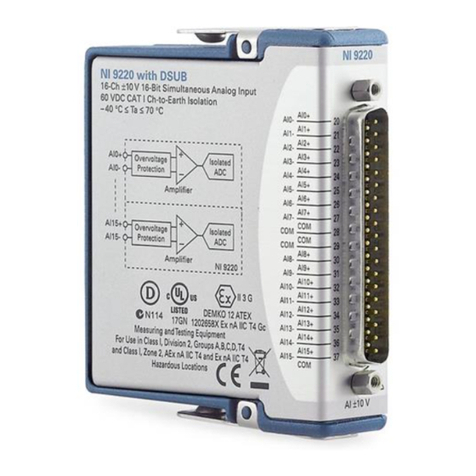
National Instruments
National Instruments 9220 CALIBRATION PROCEDURE
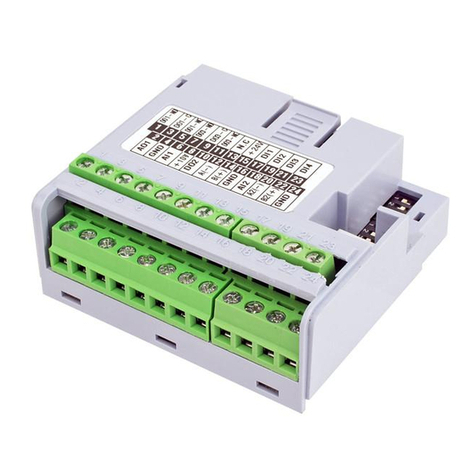
WEG
WEG CFW500 Series Installation, configuration and operations guide
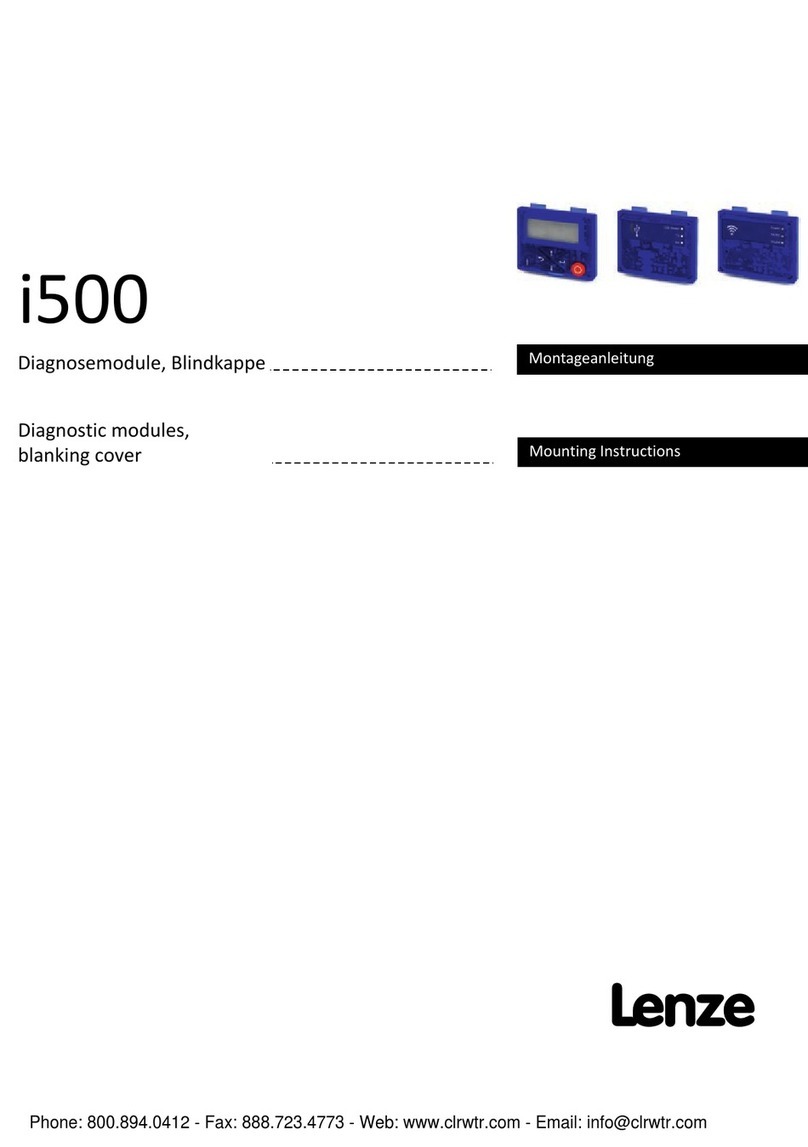
Lenze
Lenze i500 Series Mounting instructions

Norgren
Norgren HERION G1/4 manual
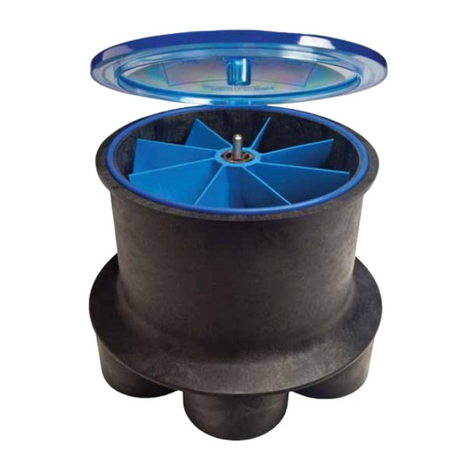
Blue Square Labs
Blue Square Labs Q360 Installation and maintenance guide
